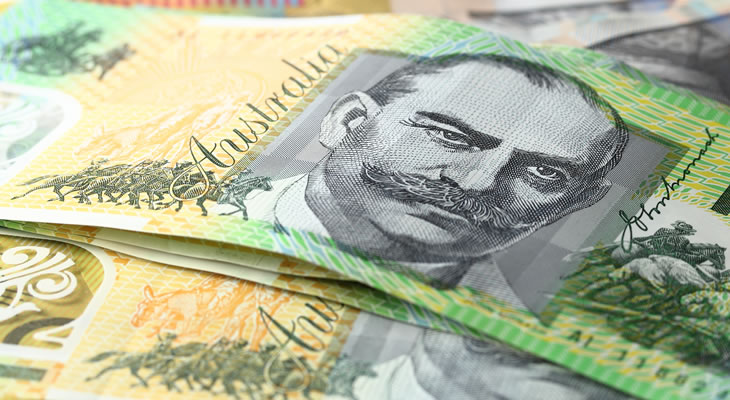Pound to Australian Dollar Exchange Rate Struggles to Advance Despite Brexit Hopes
The Australian Dollar (AUD) exchange rate rose this week, as a broad risk-off movement in markets came to an end and investors became less hesitant to take risks. As a result, the Pound Sterling to Australian Dollar (GBP/AUD) exchange rate has failed to advance.
After opening the week at the level of 1.8088, GBP/AUD briefly edged higher before spending most of the week trending with a downside bias.
While GBP/AUD recovered from the monthly low of 1.7871 it hit on Tuesday thanks to optimistic Brexit speculation, the pair’s recovery was limited. GBP/AUD was trending close to the level of 1.8000 at the end of the week.
A report claiming that the UK and EU were close to reaching a deal on the future of UK-EU financial services relations send the Pound (GBP) surging against most major rivals later in the week.
However, the Pound was ultimately unable to register much of a recovery against the Australian Dollar, which saw its own surge in demand as markets entered a risk-on rally.
Pound (GBP) Exchange Rate Rally Cools as Brexit Uncertainties Remain
The Pound’s (GBP) performance cooled on Friday, following rally attempts since Wednesday, as a lack of fresh Brexit uncertainties or major UK data left investors digesting the week’s news.
By far the most influential event for Pound investors over the last week was a report in The Times newspaper claiming that a post-Brexit financial services deal between the UK and EU was close to being met.
While officials attempted to play down the report, The Times stuck by its sources and remained confident that a deal was close.
This, as well as a surprisingly hawkish Bank of England (BoE) on Thursday, made it easier for the Pound to recover from its worst levels.
However, major Brexit uncertainties remain – especially as there is still no sign of progress on the issue of Ireland’s border. This means ‘no-deal Brexit’ fears persist.
There are also fears that even if a deal is reached, UK MPs could prove to be significant domestic obstacles. According to John Marley from Smart Currency Business:
‘Ratification by the UK parliament (of any deal) could be problematic so (we) would be wary of predictions of lots more upside for Sterling until that has been resolved,’
Australian Dollar (AUD) Exchange Rate Bolstered on US-China Trade Hopes
Towards the end of October, the relatively risky Australian Dollar saw broad weakness as global stock markets weakened and investors bought safe haven currencies instead.
However, since the beginning of November the ‘Aussie’ has seen a surging rebound versus many major currency rivals. This has even helped it to avoid major losses against a resurgent Pound.
The Australian Dollar’s rebound came as a result of recovering stock markets, making investors less hesitant to buy riskier trade-correlated currencies like the Australian Dollar again.
Demand for the Australian Dollar remained fairly sturdy on Friday. Investors piled further into the ‘Aussie’ following speculation that the US and China were seeing more productive trade talks.
US President Donald Trump tweeted that he had had a promising talk with Chinese President Xi Jinping. This tweet caused risk-sentiment to rise even further and the Australian Dollar’s strong streak continued.
Pound to Australian Dollar (GBP/AUD) Exchange Rate Investors Anticipate Reserve Bank of Australia
The Pound to Australian Dollar (GBP/AUD) may struggle to advance in the coming sessions if risk-sentiment continues to rise.
If investors become more eager to take risks again, for example due to US-China trade talks or due to stronger trade data or lighter political jitters, the Australian Dollar could be in for another strong week.
The Australian Dollar could be knocked by domestic news in the coming sessions though, if the Reserve Bank of Australia’s (RBA) November policy decision disappoints investors.
The RBA is not expected to make any changes to monetary policy, but any changes to the bank’s tone regarding the policy outlook could be influential.
Analysts expect the RBA will leave Australian monetary policy frozen for some time to come. Signs that this may be even longer than markets expect could weaken the Australian Dollar.
Key UK data will be published next week too, including services PMI stats and Gross Domestic Product (GDP) growth projections.
However, unless these results are highly surprising the Pound to Australian Dollar (GBP/AUD) exchange rate outlook is more likely to be driven by risk-sentiment and potential Brexit developments.


Comments are closed.